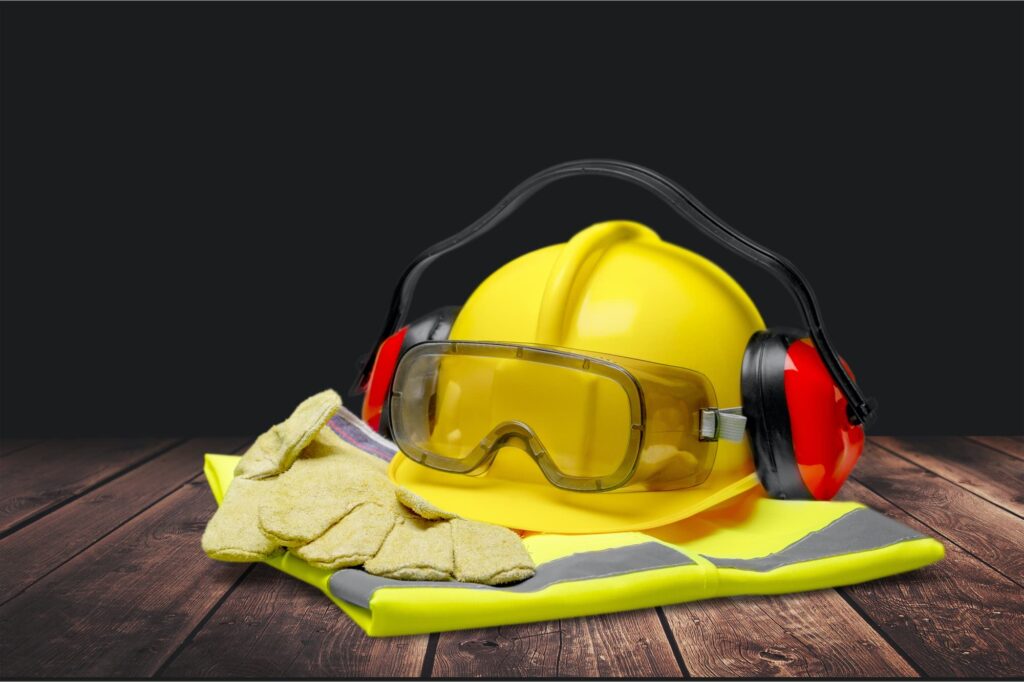When it comes to health and safety, employers and management have more responsibilities to protect their staff than ever.
National statistics show that during the year 2021/22, 61,713 employee personal injuries occurred and 36.8 million working days were lost due to work-related illness and injury.
To ensure the well-being of employees and the productivity of the workplace, some health and safety considerations are a priority.
Working at height safety procedures
Any task involving the risk of falling and liable to cause injury is working at height. This could be anything from working on elevated platforms like scaffolding and stacking shelves to working below ground in basements and cellars.
Employers must implement working-at-height safety procedures to keep staff protected. Implementing fall protection like safety harnesses or anchor points, as well as written policies can ensure everyone working at height is appropriately supported.
Personal Protective Equipment (PPE)

Likely, you’re already familiar with PPE since coming out of the COVID-19 pandemic but everything from steel-toed boots and hard hats to hi-vis jackets and work gloves fall under this category. Wearing the appropriate PPE is crucial to keeping workers safe and employers have a legal responsibility regarding the provision of PPE.
PPE regulations are subject to change and update all the time so it’s up to management to ensure staff is trained, qualified, and aware of new PPE procedures.
Mental health
Working environment can have a significant impact on staff mental health and this in turn can affect how well an individual is performing in their role. Statistics show that nearly 15% of people experience mental health problems in the workplace but introducing workplace interventions and employee care management can decrease this figure.
Being aware of the ingrained and widespread nature of depression and other psychological conditions means employers can develop communication channels and centralized databases. This allows staff to ask for the help that they need.
Distractions
Outside distractions often contribute to mistakes and accidents in the workplace so mitigating these where possible can help improve productivity and avoid injury in serious cases. Workplace distractions refer to anything from mobile phones and internet browsing to uncomfortable working conditions.
Employers can’t afford to be careless with distractions so protocols should be in place. For example, measures that ban the use of phones during work hours or air conditioning unit installation to keep workplace temperatures under control.
Chemical and Biological Hazards

Chemical and biological hazards in the workplace can pose significant risks to the health and safety of employees. It is crucial for organizations to identify and assess these hazards to implement effective control measures.
Chemical hazards include substances such as toxic chemicals, gases, solvents, and corrosive materials, while biological hazards encompass bacteria, viruses, fungi, and other microorganisms.
To mitigate the risks associated with chemical hazards, employers must provide adequate training to employees on safe handling, storage, and disposal of hazardous substances.
This includes educating workers about the potential health effects, proper use of personal protective equipment (PPE), and emergency response procedures. Additionally, employers should establish clear protocols for chemical spillage or leakage, including containment measures and appropriate decontamination procedures.
Fire Safety and Emergency Preparedness
Fire safety is a critical aspect of workplace health and safety. Employers should develop and implement comprehensive fire safety plans that outline procedures for preventing and responding to fires. This includes maintaining clear and unobstructed evacuation routes, installing appropriate fire detection and suppression systems, and conducting regular fire drills.
Employees should be trained on fire prevention measures, including proper storage and handling of flammable materials, safe use of electrical equipment, and the importance of reporting potential fire hazards.
Additionally, training programs should cover evacuation procedures, including the location of emergency exits, assembly points, and the proper use of fire extinguishers.
Noise and Vibration Control
Excessive noise and vibration in the workplace can lead to various health issues, including hearing loss, stress, and decreased productivity. Employers should conduct noise assessments to identify areas where noise levels exceed recommended limits and implement control measures to minimize exposure.
This may include engineering controls such as noise barriers or enclosures, regular maintenance of machinery and equipment, or the use of personal protective equipment such as earplugs or earmuffs.
Similarly, excessive vibrations from machinery or equipment can lead to musculoskeletal disorders and discomfort for employees. Employers should implement vibration control measures, such as isolating vibrating equipment, maintaining proper maintenance schedules, and providing ergonomic solutions to minimize the effects of vibrations on workers.
Training and Education on Health and Safety

Proper training and education on health and safety are fundamental in creating a safe and healthy work environment. Employers should provide comprehensive training programs that cover a wide range of topics, including hazard identification and assessment, safe work practices, proper use of equipment and machinery, and emergency response procedures.
Training should be tailored to specific job roles and tasks, ensuring that employees have the necessary knowledge and skills to perform their work safely. Regular refresher courses and updates on new regulations or best practices should also be provided to ensure ongoing awareness and compliance.
Emergency Response and Evacuation Procedures
In the event of an emergency, such as a fire, chemical spill, or natural disaster, having well-defined emergency response and evacuation procedures is crucial. Employers should develop and communicate clear protocols for employees to follow during emergencies, including evacuation routes, assembly points, and methods of communication.
Regular drills should be conducted to familiarize employees with emergency procedures and to identify areas for improvement. Additionally, employers should establish a system for reporting emergencies and ensure that appropriate personnel are trained to respond effectively to different types of emergencies.
Lockout/Tagout

This is a safety procedure used in the construction sector to guarantee that machinery is shut down safely at the end of the day or during maintenance periods. A lock is attached to the equipment with the name of the employee that last used it and it can only be opened with a specific key.
This prevents accidental switch-on and provides a layer of accountability for any system faults.







